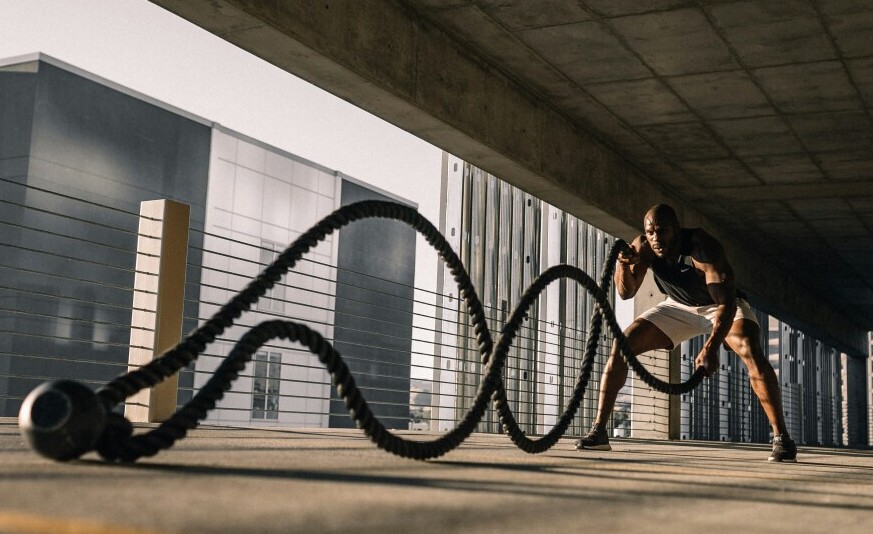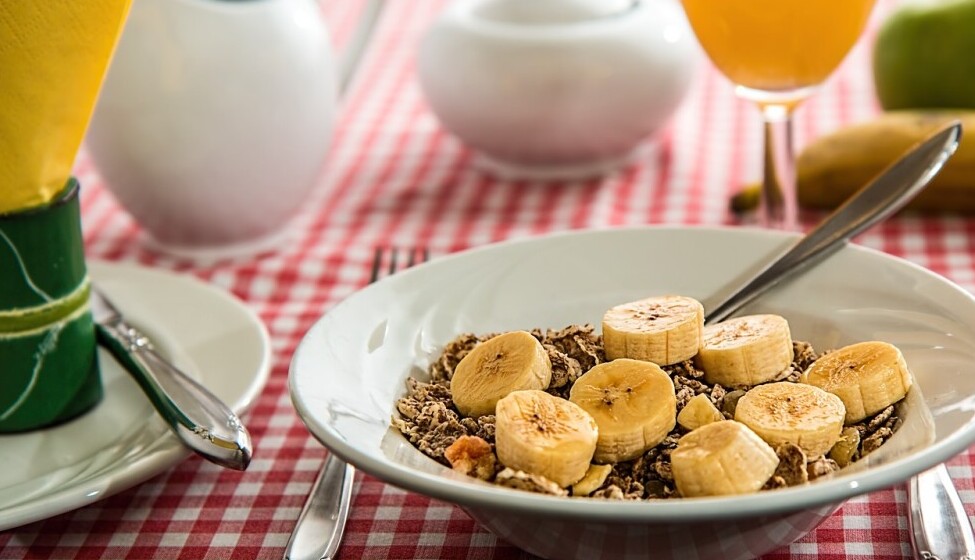Beginner’s Guide To Fitness: Your Path To A Healthier You
Starting a fitness journey can feel like standing at the edge of a vast new world. The first step is all about figuring out where you currently stand. It’s crucial to assess your own fitness level by taking into account your current activity level, any past injuries, and how you generally feel about physical activity. This step helps you choose workouts that are just right for you, rather than diving headfirst into something that might discourage you.
Once you have a good grasp of your current fitness landscape, it’s time to take action, and the name of the game is “slow and steady.” If you’re brand new to the fitness scene, go easy on yourself. Starting with short workouts, say, 10 to 20 minutes a few times a week, allows your body to adjust and helps build a routine without feeling overwhelmed. It’s amazing what gradual progress can do for your confidence and stamina over time.

Finding activities you enjoy is like discovering your secret sauce—it’s what will keep you coming back for more. Exercise doesn’t have to be boring or something you dread. Whether it’s walking in the park, spinning the pedals of a bike, or joining a dance class, the key is enjoyment. When you find joy in movement, staying committed becomes a whole lot easier.
Deciding where to embark on this fitness journey is another jigsaw piece to consider. Start at home, or maybe explore a local gym if you’re up for it. If you prefer the comfort of your living room, there are endless online resources and workout apps to help guide you, each offering routines for any fitness level.
Kicking off your fitness journey is a blend of practical steps and a little self-kindness. Remember, the biggest investment you can make is in your health, and taking these initial strides is a giant leap towards a healthier, happier you.
Choosing the Right Workout: Find What Moves You
Figuring out the perfect workout can feel like trying to pick a treat from a sweet packet. It’s crucial to first understand what you hope to achieve—whether it’s shedding those extra pounds, sculpting muscles, boosting flexibility, or just getting your heart pumping for better health. These goals are your starting point, guiding how you shape your workout routine.
Exploring different types of exercise is a bit like test-driving cars before buying. You want a mix that keeps things fresh and hits all the right spots. Strength training builds muscle and burns calories, cardio workouts get the heart racing, yoga sessions increase flexibility, and balance exercises keep you steady on your feet.
It’s important to shake things up a little to avoid boredom and hit different muscle groups. Changing your routine not only makes working out fun but also stops you from hitting a plateau where progress slows down.

While you’re mixing and matching those workouts, the golden rule is to listen to your body. If a workout is too intense or something feels off, it’s okay to switch things up. Sometimes a little tweak or a different approach can make all the difference. Remember, the best workout is one that fits you like a glove, keeping you engaged and free from injuries.
As you explore these options, you start to answer the all-important question: Where do I start to get fit and healthy? Each person’s fitness journey is like a custom piece of art, made to fit their unique life and goals.
Creating a Realistic Plan: Map Out Your Path to Success
Crafting a fitness plan is like plotting a road trip itinerary – you need clear directions to reach your destination without unnecessary detours. Setting goals using the SMART framework is a savvy approach. Make sure your goals are Specific, Measurable, Achievable, Relevant, and Time-bound. Instead of saying, “I want to get fit,” tighten that focus to something like, “I’ll hit the gym for 30 minutes thrice a week for two months.”
Once you’ve got your goals locked in, it’s time to lay down some structure. Scheduling workouts is your best ally in staying consistent. Whether you’re fitting exercise around work, classes, or life’s surprises, having a routine gives you a sense of order and purpose. And hey, life can be unpredictable, so stay flexible and adapt as needed.

Tracking your progress is more than just ticking boxes; it’s about seeing how far you’ve come and keeping you fired up for the journey ahead. Whether you’re old school with pen and paper or tech-savvy with apps, logging workouts, meals, and even moods can be enlightening.
Setting off on a home workout routine? Start with the basics – no need for a pricey setup. Incorporate body-weight exercises or grab some cheap resistance bands or dumbbells. With consistency and a pinch of creativity, you’ll achieve impressive results right from your living room.
Embarking on a fitness journey from home is totally doable, and with the right plan, you’re setting yourself up for success. It’s all about creating a strategy that aligns with your lifestyle and motivates you to keep moving forward on your quest for better health.
Embracing the Mind-Body Connection: Maintain Motivation and Consistency
Exercise isn’t just a physical thing; it’s a mental game too. Finding that sweet spot where your mind and body work together can truly transform your entire fitness experience. Regular workouts are stress-busters and mood-lifters, releasing endorphins that make you feel oh-so-good.
Cultivating healthy habits is key to keeping up with your fitness routine. It’s less about willpower and more about setting routines effortlessly. Schedule your workouts like you would any important meeting or appointment. Over time, it becomes second nature, like brushing your teeth.
Staying motivated isn’t always a walk in the park, so be ready to mix things up when necessary. Remember those milestones we talked about? Celebrate them, big or small. Bought new workout gear because you hit your monthly goals? Awesome. Treat yourself to a relaxing activity when you accomplish a challenging workout week.
Consistency is the hero of any journey, but that doesn’t mean punishing yourself on tired days. Listen to your body, and take that rest day if you need it. Resting is as important as working out because it allows your body to recover and get stronger. It’s all about keeping a balance that works for you.
By connecting the dots between mind and body, you create a sustainable fitness journey that’s rewarding and fun over the long haul. It’s more than just lifting weights or running laps; it’s about nurturing a lifestyle that supports overall well-being.
Understanding What a Healthy Fitness Level Means for You
Fitness isn’t a one-size-fits-all journey, so figuring out what ‘healthy’ looks like for you is key. It’s about balancing different aspects of life—exercise, nutrition, rest, and even stress management. Getting this balance right helps pave the way for long-term health and vitality.
Achieving and maintaining a baseline fitness level is all about being active enough to support a healthy lifestyle. It doesn’t mean extremes or endless hours at the gym. Even a daily walk or a weekend bike ride to the park adds up.
Focus on what makes sense for your life. If you’re busy, ensure your fitness fits into your schedule. Short, effective workouts can be just as beneficial. Find something that you can do consistently, even on your busiest days.
Nutrition is the other side of the coin and fuels your workouts and recovery. Eating a balanced diet rich in whole foods not only boosts energy levels but also supports overall health. It doesn’t have to be strict or complicated; just aim for a colourful plate and plenty of hydration.

Remember, fitness is important, but it’s not just about physical strength or an image in the mirror. It’s about feeling good, having energy, and creating space to thrive both mentally and physically. That’s the real measure of health and happiness. By focusing on this bigger picture, you’ll build a lifestyle you can enjoy for years to come.






Hello Nikki!
This article is such an inspiring introduction to fitness! It really breaks down the process in a way that feels approachable and motivating, especially for someone just starting out. I love how it emphasizes setting realistic goals—it’s so easy to get overwhelmed or discouraged if you aim too high too quickly.
Do you think this guide works well for people of all fitness levels, or is it mostly tailored to complete beginners? I noticed the focus on creating habits, which I think is fantastic. But what would you suggest for someone who’s fallen off the fitness wagon and wants to start again?
The part about celebrating small wins really resonated with me. It’s so important to recognize progress, even if it feels small at first. What are some fun or creative ways to reward yourself for hitting those milestones without undoing your hard work?
I also appreciated the reminder to listen to your body. That’s advice we all hear, but it’s easy to ignore when you’re feeling the pressure to push harder. How do you balance that with staying disciplined and consistent?
This guide makes the journey to better health feel like a team effort rather than a lonely uphill climb—well done!
Angela M 🙂
Hi Angela M
Thank you so much for your kind words! I’m thrilled to hear that you found it inspiring and approachable. To answer your questions, this guide is designed for everyone, including those looking to refresh their fitness journey. For someone who’s fallen off the wagon, I’d recommend starting with small, manageable goals to rebuild confidence and consistency.
As for rewarding yourself, consider non-food rewards like a new workout outfit, a relaxing spa day, or planning a fun outing with friends. These can help keep you motivated without compromising your progress. I’m glad the reminder to listen to your body resonated with you too. It’s such an important aspect of any fitness journey!
Thanks again for your thoughtful feedback!
Warm regards,
Nikki
This guide is such a great resource for beginners! The way you’ve outlined the steps to start a fitness journey feels approachable and encouraging. I love how you emphasized setting realistic goals and finding enjoyable activities—it makes the idea of getting fit less intimidating. The tips on staying consistent and tracking progress are especially helpful. Thank you for sharing such practical and inspiring advice to help people take their first steps toward a healthier lifestyle!
Hi
Thank you for your wonderful feedback! I’m so glad to hear that you found the guide approachable and encouraging. It’s great to know that the emphasis on realistic goals and enjoyable activities resonated with you.
Helping others take their first steps toward a healthier lifestyle is my passion, and your words motivate me to continue sharing practical advice. If you have any questions or need more tips, feel free to reach out!
KR,
Nikki